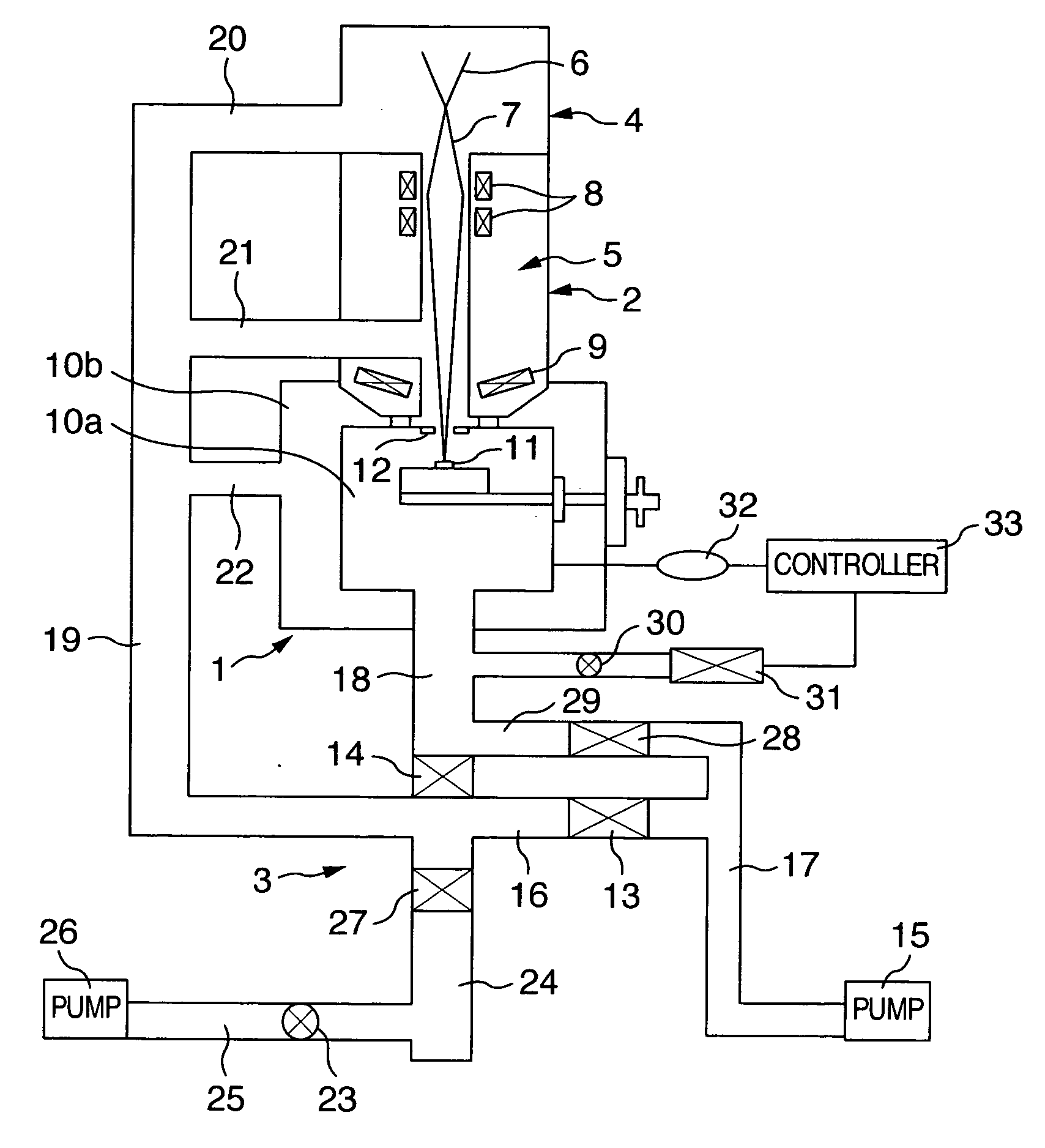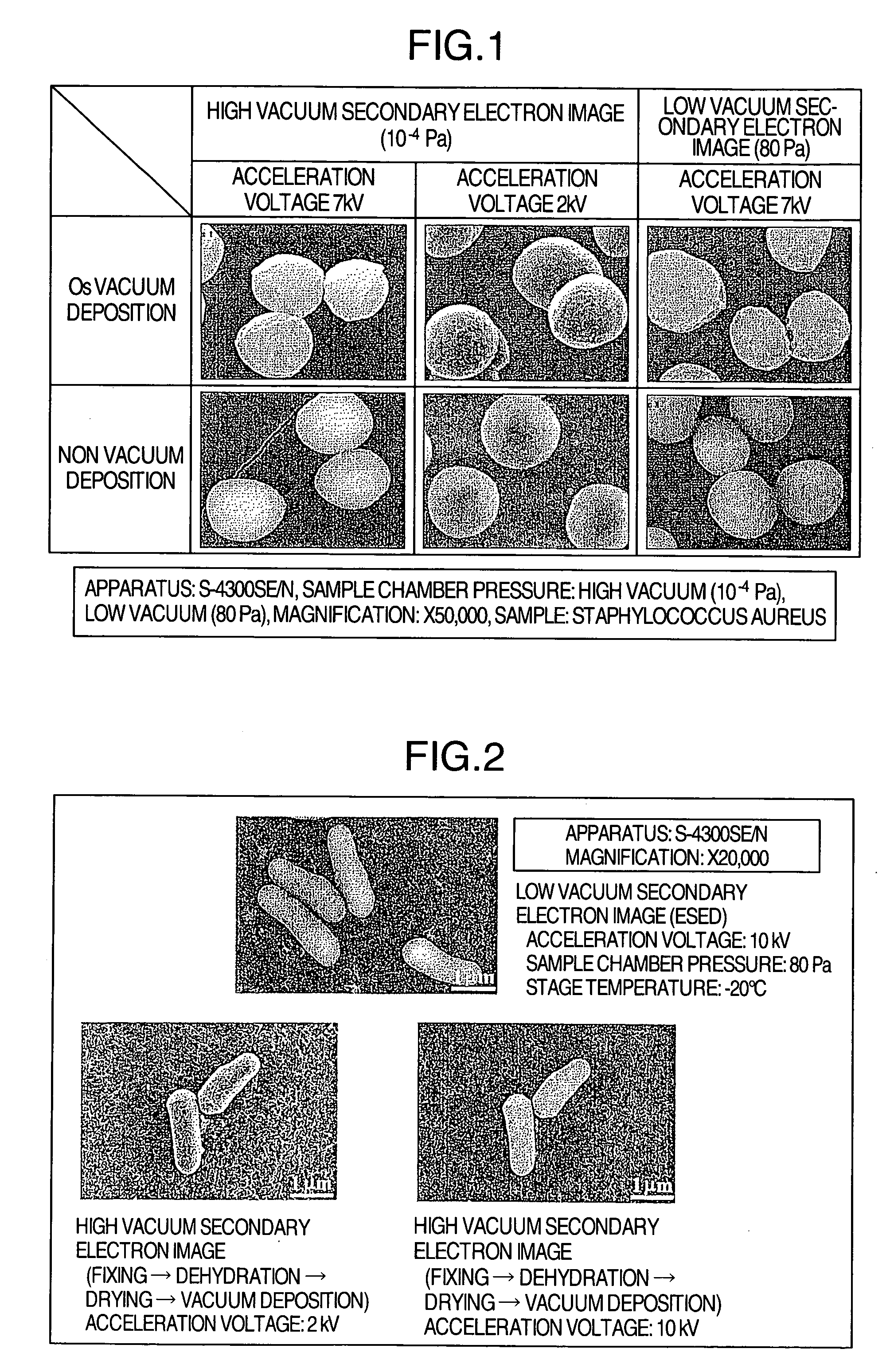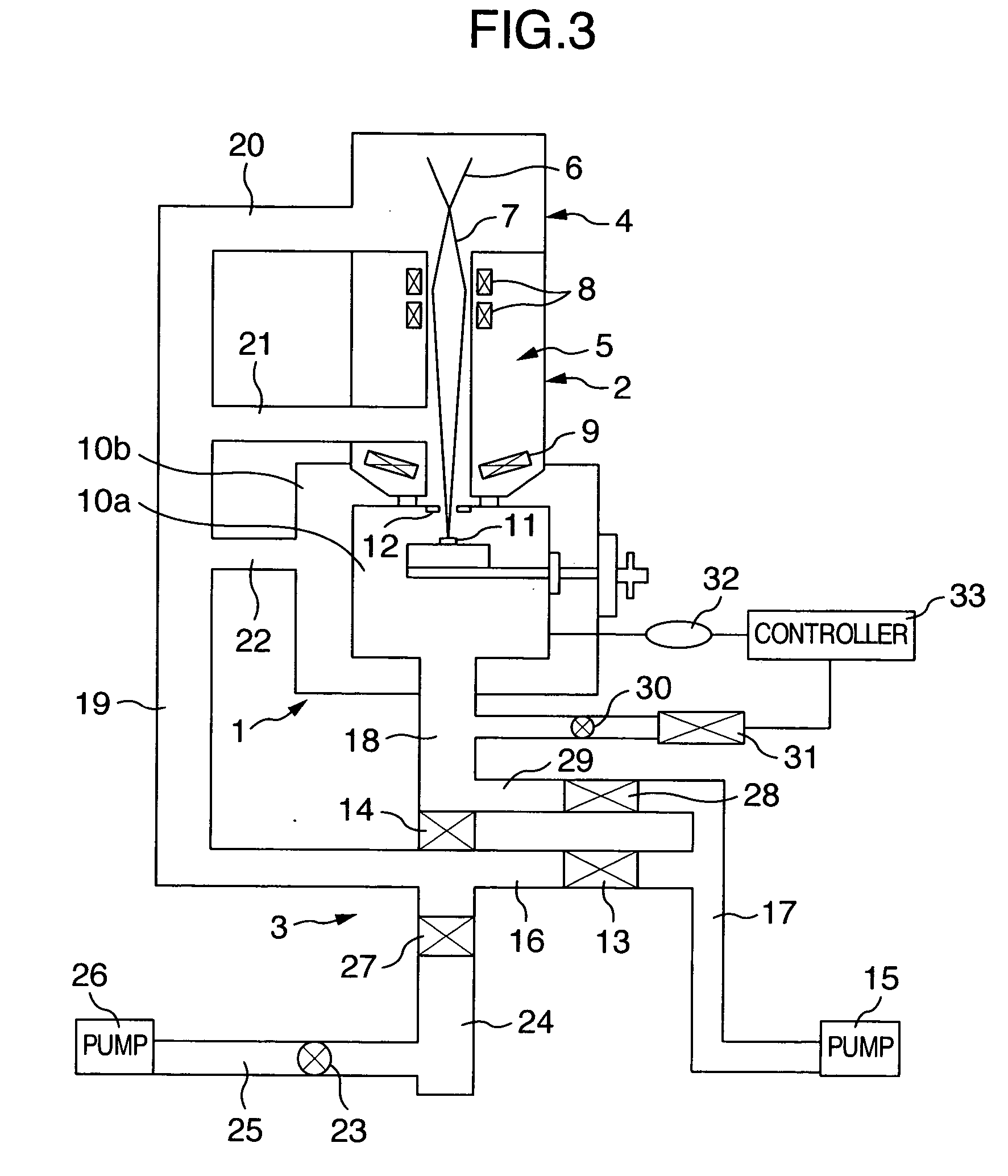Low vacuum scanning electron microscope
- Summary
- Abstract
- Description
- Claims
- Application Information
AI Technical Summary
Benefits of technology
Problems solved by technology
Method used
Image
Examples
Embodiment Construction
[0020]FIG. 3 is a schematic view showing a low vacuum scanning electron microscope according to an embodiment of the invention. The scanning electron microscope includes a sample chamber 1, a barrel portion 2 at an upper stage of the sample chamber 1 and an exhaust system 3 for exhausting the inside of each of the sample chamber 1 and the barrel portion 2. The barrel portion 2 includes an electron gun portion 4 and a lens system (electronic optical system) portion 5. The sample chamber 1 has a double structure of an inner sample chamber 10a and an outer sample chamber 10b that can independently conduct the exhaust operation.
[0021] An electron gun 6 such as a thermo-electron gun or a Schottky emission type electron gun is disposed in the electron gun portion 4. The electron beam 7 emitted from the electron gun 6 and accelerated is thinly converged by a condenser lens 8 and an objective lens 9 inside the lens system portion 5 and is irradiated to a sample 11 arranged inside the inner...
PUM
 Login to View More
Login to View More Abstract
Description
Claims
Application Information
 Login to View More
Login to View More - R&D
- Intellectual Property
- Life Sciences
- Materials
- Tech Scout
- Unparalleled Data Quality
- Higher Quality Content
- 60% Fewer Hallucinations
Browse by: Latest US Patents, China's latest patents, Technical Efficacy Thesaurus, Application Domain, Technology Topic, Popular Technical Reports.
© 2025 PatSnap. All rights reserved.Legal|Privacy policy|Modern Slavery Act Transparency Statement|Sitemap|About US| Contact US: help@patsnap.com



